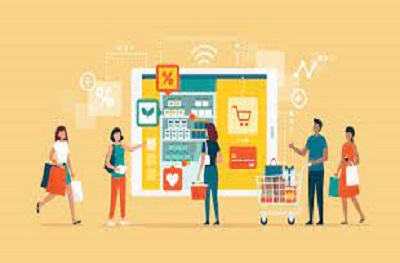It’s no longer news that the covid-19 disruption has created a fast-changing and less-predictable environment for most industries, leaving many leaders and businesses floating adrift. And as consumers have entered a survival mode, it’s all about staying safe and connected, and most profoundly, being digitally connected at all times.
Being one of the largest contributors in national GDPs and the biggest employer in many countries of the world, the pace of change in the commerce industry is now at a frenetic magnitude. The effect on the entire ecosystem is magnified, from entrepreneurs to large retailer groups, to e-commerce players, to landlords, luxury to mass, and every touch-point in between.
Disruption in commerce is not new. While brick and mortar retail is challenged under a new regime of consumer behavior, the outbreak is bringing a new audience to e-commerce. This should boost the market long term, with strong growth forecast through to 2025 providing unparalleled opportunities for a new cohort of entrepreneurs to launch new products and services.
How can e-commerce capitalize on the current trend and thrive by moving far beyond the basic sites and apps? Entrepreneurs and business leaders are looking at this situation as an opportunity to transform to a new “business as usual,” and they should consider these immediate actions as they fight to win on what they’ve built.
Stay connected to your customers
Can e-commerce win the customer acquisition and retention battle? This crisis shifts consumer priorities and behaviors, and these will most likely stick as new habits after the pandemic is over. Agile businesses respond with convenience, product assortment, and transparency, ensuring they engage with their customers wherever they are to build business growth, reinforce customer loyalty, and penetrate new categories and territories. In the same way that COVID-19 will leave lasting emotional scars, it will also create lasting emotional bonds for long after the pandemic has passed.
Deliver superior friction-less shopping experience
Friction is the enemy of e-commerce– and indeed of the consumer as well. The rise of digital commerce is creating new customer touch-points, enabling shoppers to interact with businesses through a complex network of categories and platforms. But how can digital commerce combat the risk of disjointed or confusing buying journeys?
For SMEs, tackling the challenge of frictionless commerce can be daunting. Savvy entrepreneurs are making frictionless and hyper-personalized commerce a key focus on aiding the shopper in the discovery, purchase, and post-purchase experience, while they are delivering exceptional site functionality, descriptive product pages, and superior customer service to outperform the competition.
Reimagine inventory management and supply chain
As people are making buying choices based on new and ever-changing circumstances; the product purchasing categories are also changing. In response to demand spike of new categories, the industry is witnessing a dramatic restructuring of the supply chain order in which e-commerce has traditionally operated.
Entrepreneurs are rallying to react to that trend, and are ramping up the diversification and continuity of their supply chains and inventory management to maintain some semblance of normalcy during this pandemic. While some businesses have struggled significantly from the lack of supply of critical items, entrepreneurs are tirelessly reevaluating their sourcing strategy, redesigning their supplier network, and pivoting their supply chain strategy to build resilience and respond to the new reality.
Accelerate contactless payments
With the recommendation by the World Health Organization (WHO) for consumers to use contactless cards or smartphone payments whenever possible to help reduce the risk of spreading the coronavirus, the COVID-19 pandemic proved to spur faster adoption of digital payments .
Consumers appear to favor innovation, and as shoppers are becoming savvier with technology, they are increasingly ready to embrace contactless payments and digital wallets. And businesses are responding to that trend. Noon recently partnered with Visa to transition to 100% contactless payments to curb the spread of the coronavirus while also offering certain benefits using this payment option. We expect this trend to accelerate as the world adjusts to social distancing guidelines amid the pandemic.







Comment
No comments found.